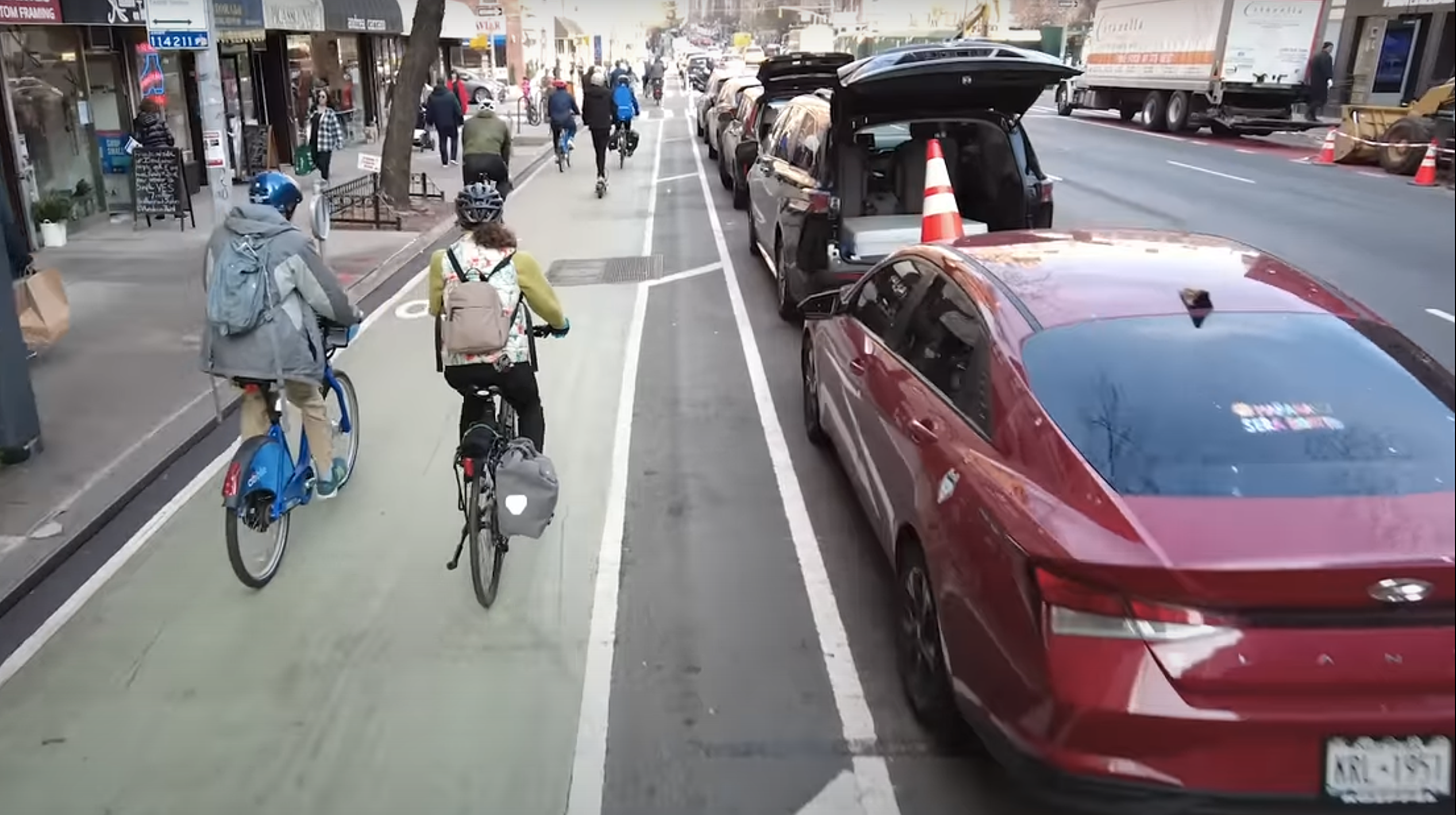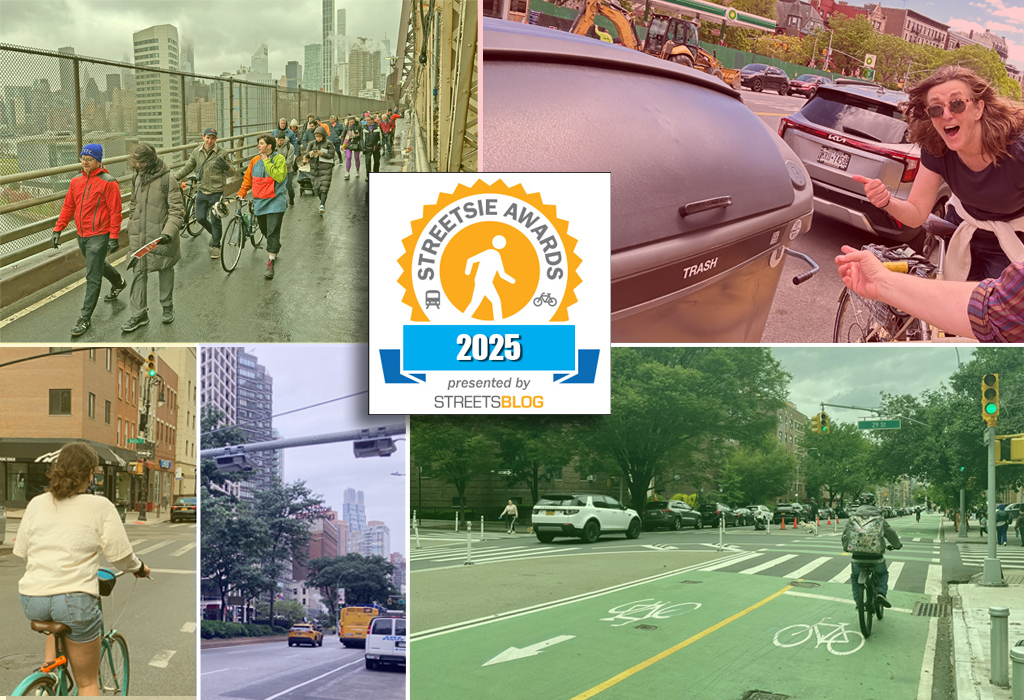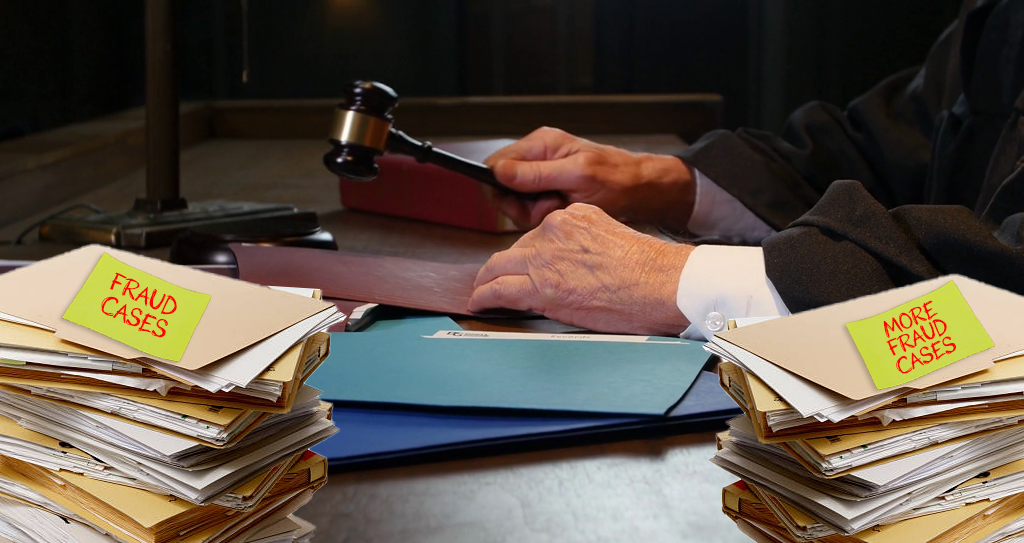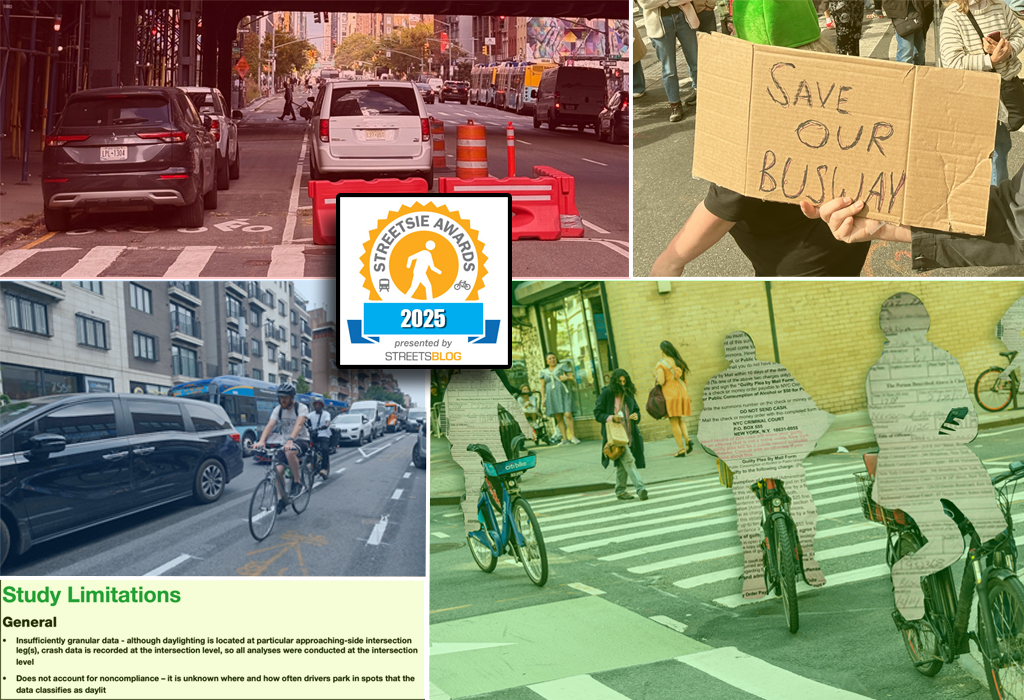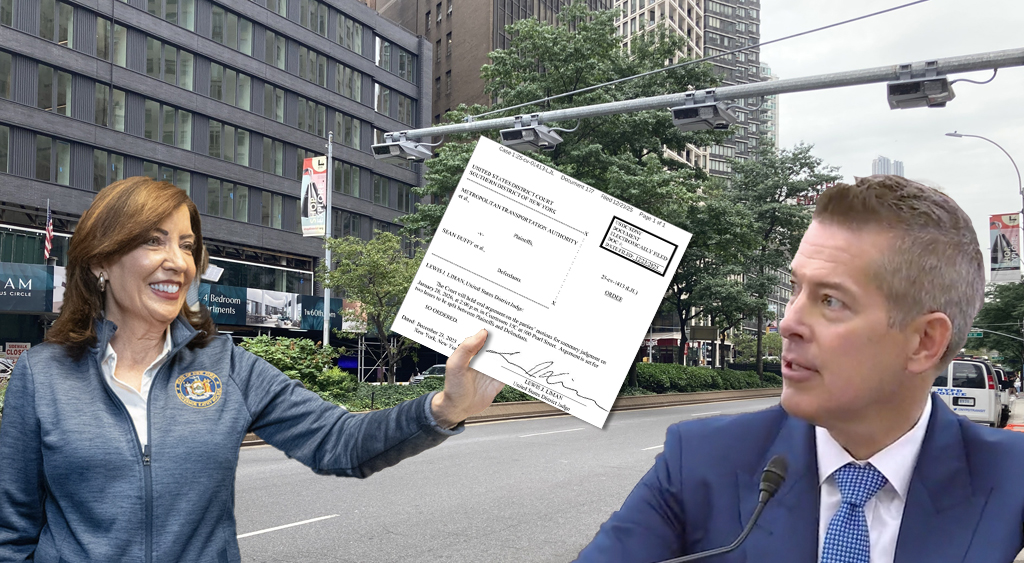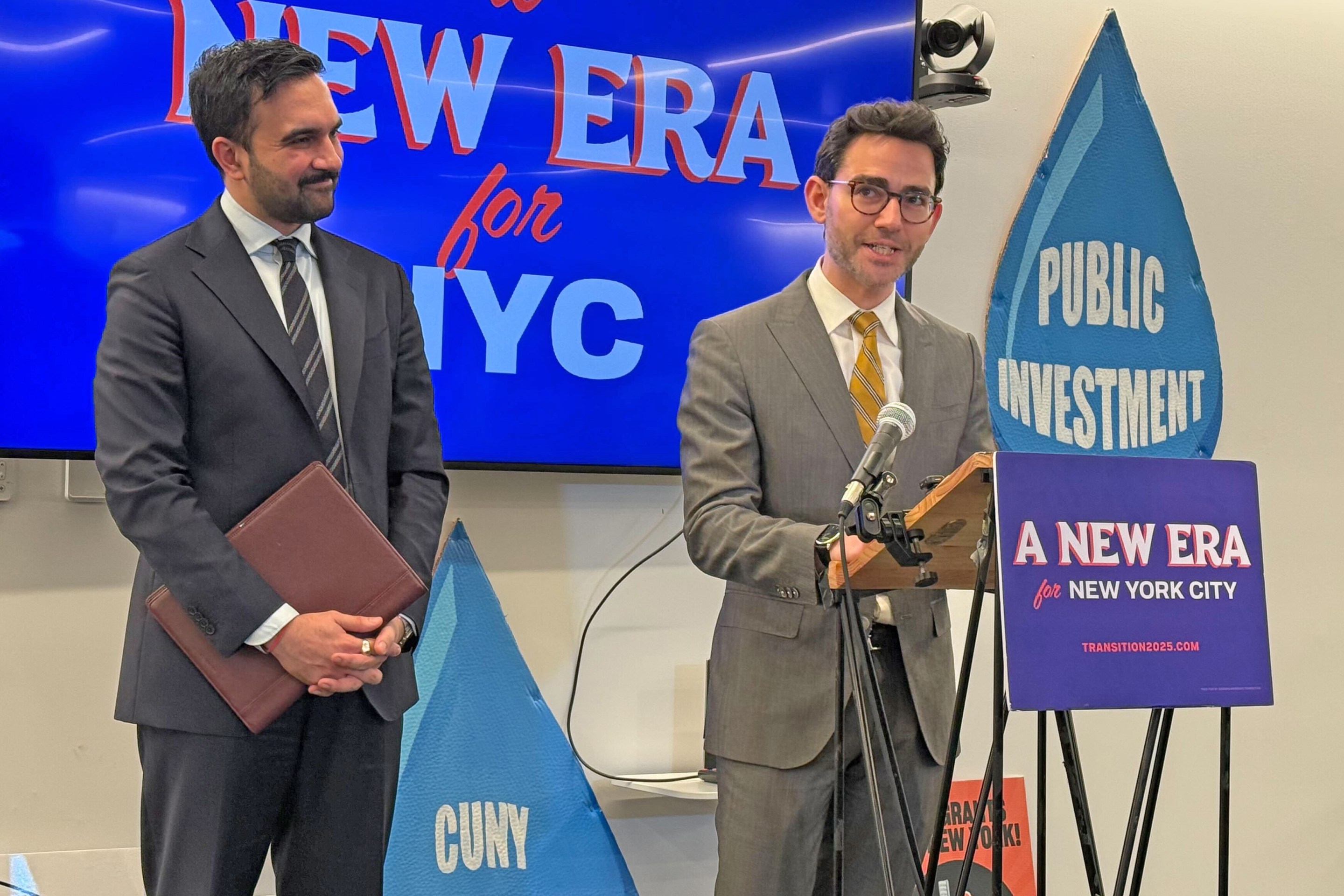Say it again: Bike lanes make roadways safer for all users.
New data from the city Department of Transportation shows that in the one year since the agency added a protected bike lane to Third Avenue in Manhattan, total injuries have dropped by 33 percent — and injuries to drivers and other car occupants have dropped by 43 percent.
Obviously, the DOT took a victory lap:
"DOT’s redesign of Third Avenue has significantly reduced serious injuries — whether you’re walking, biking, or in a car on the corridor," spokesman Vin Barone said.
The most significant finding is that injuries to cyclists dropped between 2023 and 2024, albeit only by 10 percent, but during a period when the roadway experienced a 79-percent increase in bike traffic, thanks to the new bike lane.
During the same period, pedestrian injuries dropped 63 percent. The bike lane, and other street safety improvements to the seven-lane roadway, were completed in late 2023 between East 59th to East 96th streets.
Four pedestrians and one cyclist were killed on that same segment of Third Avenue between 2020 and 2023. Since the roadway was made safer, none has been killed.
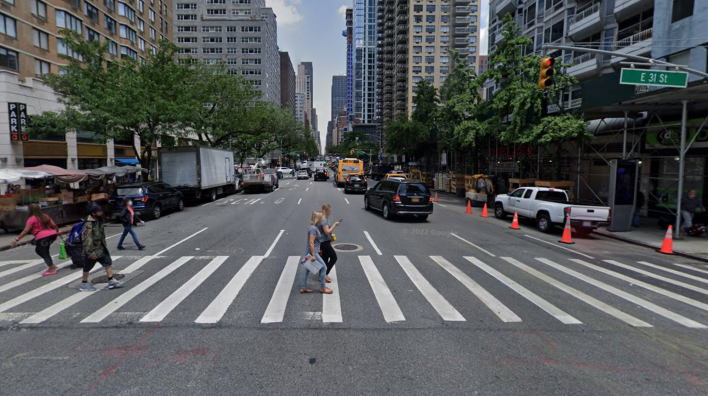
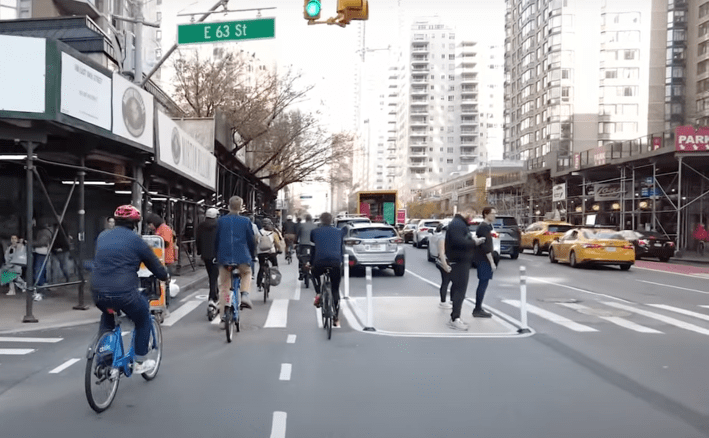
The number crunch comes as the agency is also touting its "green wave" light timing of 36 blocks of Third Avenue between E. 60th and E. 96th streets — the longest such timing in the city. Timing the lights to just 15 miles per hour obviously helps cyclists and pedestrians during the day because cyclists are much less likely to run red lights, the agency said.
But the 15-mile-per-hour light timing continues overnight, preventing drivers from reaching the kind of high speeds that carry with them an even greater risk of injury.
"This Green Wave ... reduce[s] red-light running among cyclists and overnight speeding among drivers," Barone added, emphasizing that crashes on long Manhattan avenues are far more common overnight, when drivers can (and typically do) go faster.
Activists see the difference.
"Third Avenue is now one of the best streets in all of New York City — with a new bike lane, cleverly timed lights, and safer intersections, it's a joy to walk and bike. It's not only more pleasant but safer, and this redesign will prevent countless crashes, serious injuries, and fatalities for years to come," said Ben Furnas, the executive director of Transportation Alternatives. "We need to see more of this everywhere, and are looking forward to seeing these lifesaving changes extended to E. 128th Street this year."
The safety improvements on Third Avenue mirror what happens on all roadways after a DOT redesign. The city recently estimated that the installation of protected bike lanes "reduced deaths and serious injuries among all road users by 18.1 percent, with a 29.2-percent decline for pedestrians."
Streetfilms was there when the bike lane opened:
